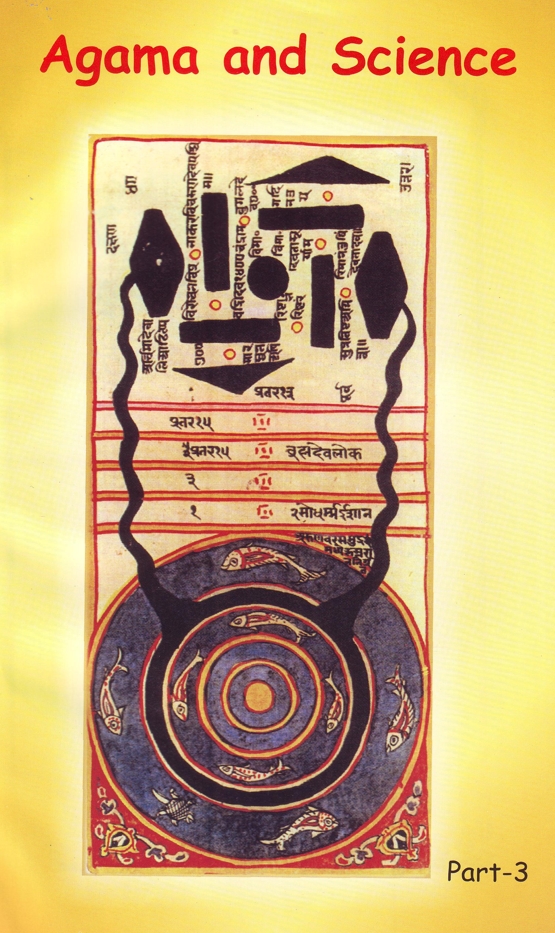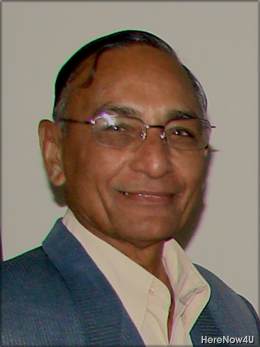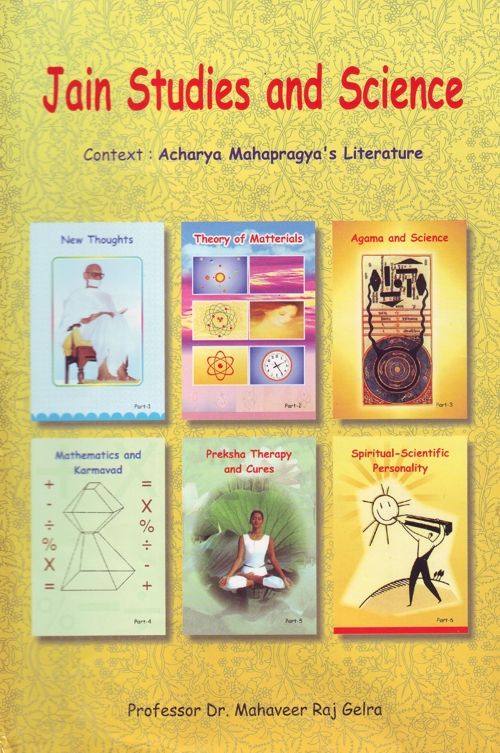
Change is the only eternal truth known to us. Everything around us is in motion. Time, earth, sun, stars, galaxies on one hand and light, electrons, micro-organisms on the other, all are in a state of perennial motion. Interestingly, all motions, though seem to be entirely random, follow definite laws. These laws were discovered initially by Newton and later on refined by Einstein in the Special and General theory of Relativity. These laws brought forward the importance of Gravitational Force on the acceleration or deceleration of a moving body.
Jain Agamic literature, fascinatingly, contain several references to the properties of motion, calculations of speed and effects of Gravitation. Mahapragya has cited a very captivating illustration from the Bhagwati Sutra. This particular instance involves two arch rivals - 'Indra of descendant lok-Chamar' and Tndra of ascendant lok- Shakra'.
An Anecdote
Chamar, the Indra of Adhow-lok, was always jealous of the affluence and riches of Shakra, the Indra of Urdhva-lok. Once, in his frustration, Chamar put in a lot of efforts and travelled all the way from Adhow-lok to Urdhva-lok. There he started abusing and ridiculing Shakra, who in turn, got angry and launched his powerful weapon, Vajra, to kill Chamar. No sooner Shakra threw his Vajra than he realised that Chamar did not possess enough capabilities and strength to reach to the Urdhva-lok on his own and must had sought the help of some virtuous deity. This sudden realisation made Shakra to run after the Vajra and retrieve it before it could cause any harm. A scenario was thus created in which the Chamar was running ahead for his life, followed by the Vajra acting as a guided missile and in succession was Shakra, desperate to catch hold of the Vajra. For Chamar to return to his abode in Adhow-lok, he had to pass through Triyak-Lok in between. As the story goes, Chamar realised that he could not escape the attack of Vajra and so instead of running towards Adhow-lok he turned to Lord Mahavira and fell on his feet seeking refuge. Lord Mahavira was sitting in a meditative posture in the Triyak-Lok. The story says that the Shakra was able to reach the Vajra and withdraw it just in the nick of time.
At first sight this story may elude to glorify Lord Mahavira, but, in fact, it reveals several interesting properties of motion and gravitation in the widespread universe said to be divided into three chambers - upper, middle and lower. This anecdote reveals an important scientific fact that the matter and jiva cannot freely travel from one field of gravitation to another, to do so additional energy is required, as in the case of a space shuttle which needs a minimum speed of 11 Km/sec to be able to escape earth's gravitation. There is an interesting mention in the Jain literatures that deities acquire special energy from an 'Uppat Mountain' before being able to enter middle lok from their abode in upper lok.
Mahapragya has pointed out this episode to be of special interest as it unravels a scientific mystery. A comparative study of Agamic and scientific theories of motion is presented here.
Agamic Beliefs
Let us enumerate salient features of the drama in which three characters namely, Shakra - Vajra - Chamar had played lead roles -
Velocity Of Shakra & Vajra
As they both belonged to the upper (Urdhva) lok, their velocity initially was fast and accelerated. In middle (Triyak) lok, their velocity encountered resistance and was slow, while in the lower (Adhow) lok it was extremely retarded. Therefore, for Shakra in upper Lok—
Urdhva Gati > Triyak Gati > Adhow Gati
Velocity Of Chamar
As he belonged to the lower (Adhow) lok, his velocity was slow and retarded in the beginning of the incidence. Later when he entered the middle (Triyak) lok, his velocity gained momentum, while in the lower (Urdhva) lok, from where he actually came, it was fast and accelerated. Therefore, for Chamar in lower Lok—
Adhow Gati > Triyak Gati > Urdhva Gati
Agam view suggests that the different forms of matter experience the gravitational field differently. Quantitative analysis, as available in Agams is tabulated here -
| GATI | |||
SHAKRA | VAJRA | CHAMAR | ||
| LOK | Upper (Urdhva) | 24 | 12 | 8 |
Middle (Triyak) | 18 | 10 | 16 | |
Lower (Adhow) | 12 | 8 | 24 | |
Unit used for the comparison of velocities is 'GAVYUT'. It is distance covered in Yojans in the given time. Now it is easier to answer - why Vajra failed to attack Chamar before being recaptured by its owner, Shakra?
- Chamar started off slow in the upper-lok while running for his life. After some time Vajra followed with accelerated speed and was, in turn, chased by the Shakra. But Chamar had advantage of time, as he was the first one to start.
- As the three entered middle-lok, the main area of action, Chamar's speed got accelerated to almost double, while the other two lost their momentum by around 30 percent.
- While Chamar took refuge to Lord Mahavira, Vajra travelled at the rate of 10 gavyuts and Shakra at 18 gavyuts, thus the latter was in a position to reach to the Vajra and to retrieve it before it could cause any damage.
According to Jain Cosmology, the universe is constituted of three geometrically distinct portions. These three parts, as discussed above, are upper, middle and lower. This terminology is intriguing, as it assumes a definite upright orientation of the universe. This upright model is with respect to the geometry and the relative superiority of composition of the three areas. This model has been discussed in all its three dimensions in the beginning of this section. Some relevant salient features are synopsised here -
- Universe is constituted of three distinct parts which are not only dissimilar in geometrical shapes but are also uniquely different in their compositions.
- Due to its high mass density and pyramidal shape, Adhow lok is said to be the base of the universe. Middle part is like an open ended cylinder. Upper section has a shape 'Mrudang' which looks like two pyramids arranged back to back.
- Seven earthly bodies are predominant in the lower lok, which contribute to its high matter density. The upper lok is largely having mass-less Vakriya-Pudgals. Middle lok has matter density in between.
Following conclusions may therefore be drawn -
- All the three lokas differ in constituting densities.
- Their respective gravitational forces exhibit different properties due to the differing shapes, sizes and densities.
- Speed of travel for different matters is different in all the three media.
- Entire universe is not homogeneous.
(Author has used the term 'belief along with 'scientific' for a special reason. As we shall see, science has made certain presumptions in the study of gravitational forces which are yet to be practically substantiated)
i. Density
A light ray, when travels into another medium, changes its velocity -that is, both its direction as well as speed is altered. It's often cited examples are - a straight rod looks bent when partially dipped into water, or a beam of white light splits into seven colours when made to travel through a prism. According to the modern physics, the speed reduces if density increases and vice-versa.
A similar observation is found in the case of Shakra and Chamar. But, Jain Agams have taken this physics a step further. According to this interesting tale, the effect of changing medium is subjective to the properties of the matter travelling through it. The change in speed is there, but it depends on the properties of matter. While travelling from low density of upper lok to the medium density of Triyak lok, two things happen simultaneously - (i) Shakra encounters deceleration while Chamar experiences acceleration.
ii. Gravitation
Why is it so? Why one kind of matter is accelerated and another retarded? If we ponder deeply, a possible answer is found in the scientific astronomical observations. Since the concept of gravitational attraction was propounded by Newton, scientists now have evolved that the force of gravitation could be both - attractive as well as repulsive.
In our story, the changes in speed patterns of Shakra, Vajra and Chamar manifest that gravitation is acting favourably in one case and adversely in another case. Jain literature, therefore, indicates that like two opposite electric charges (positive and negative) and two opposite magnetic forces (north and south poles), gravitational force too, has two aspects - attractive and repulsive.
Postulates of speed as formulated in the Jain Agams were far ahead of their times and are still contemporary. Mahapragya's efforts in opening such descriptions for scientific debates are really laudable.
 Dr. Mahavir Raj Gelra
Dr. Mahavir Raj Gelra

